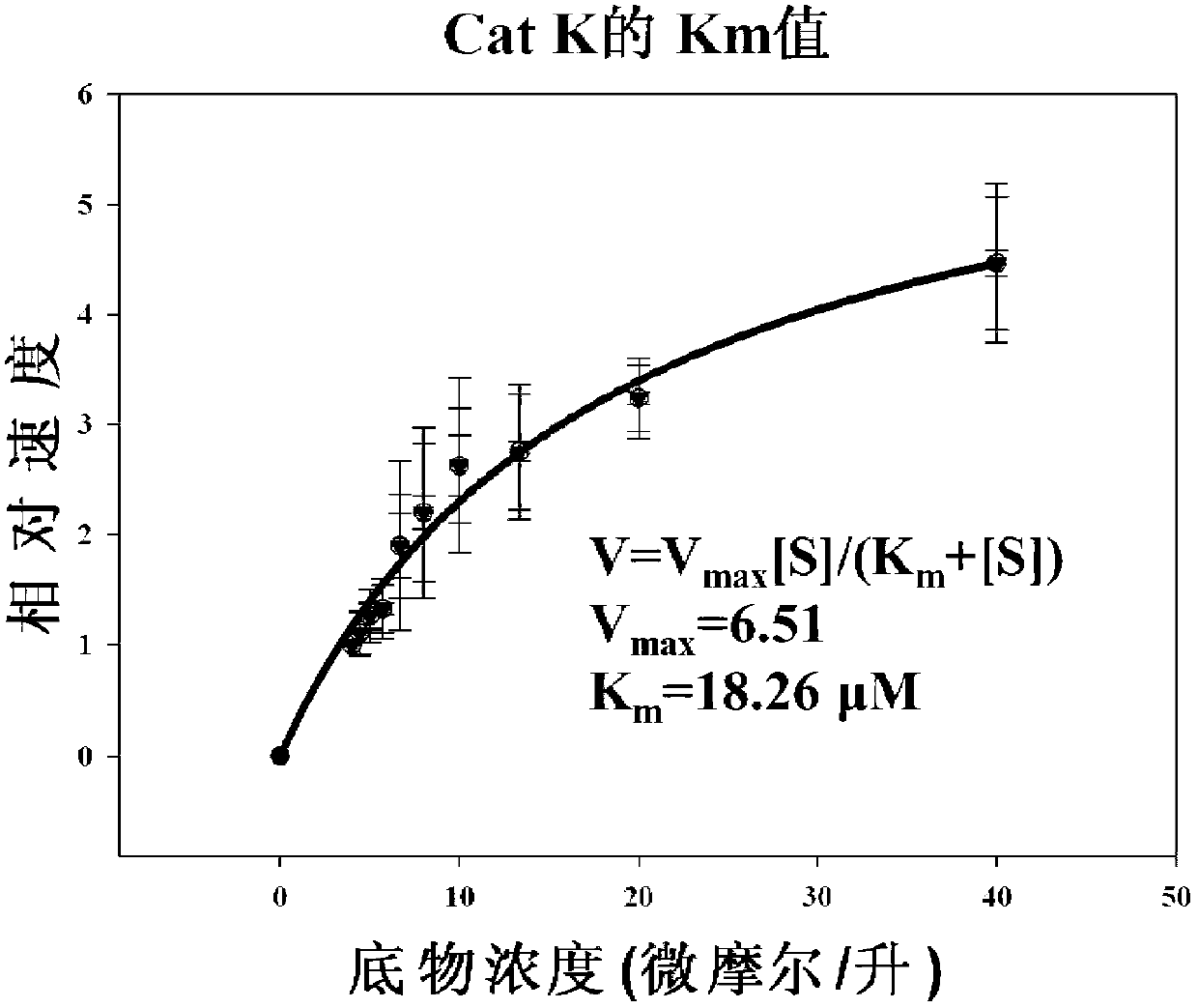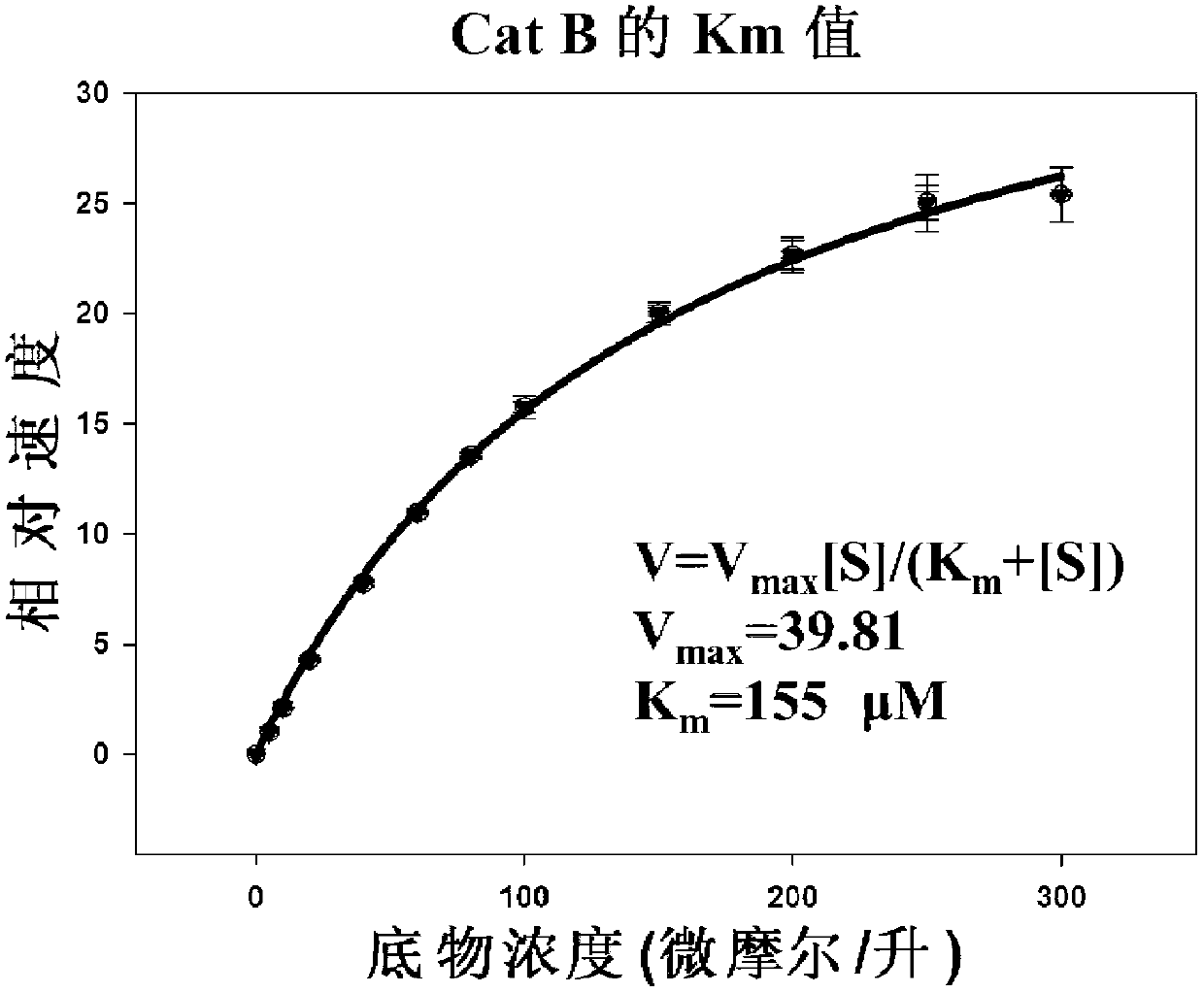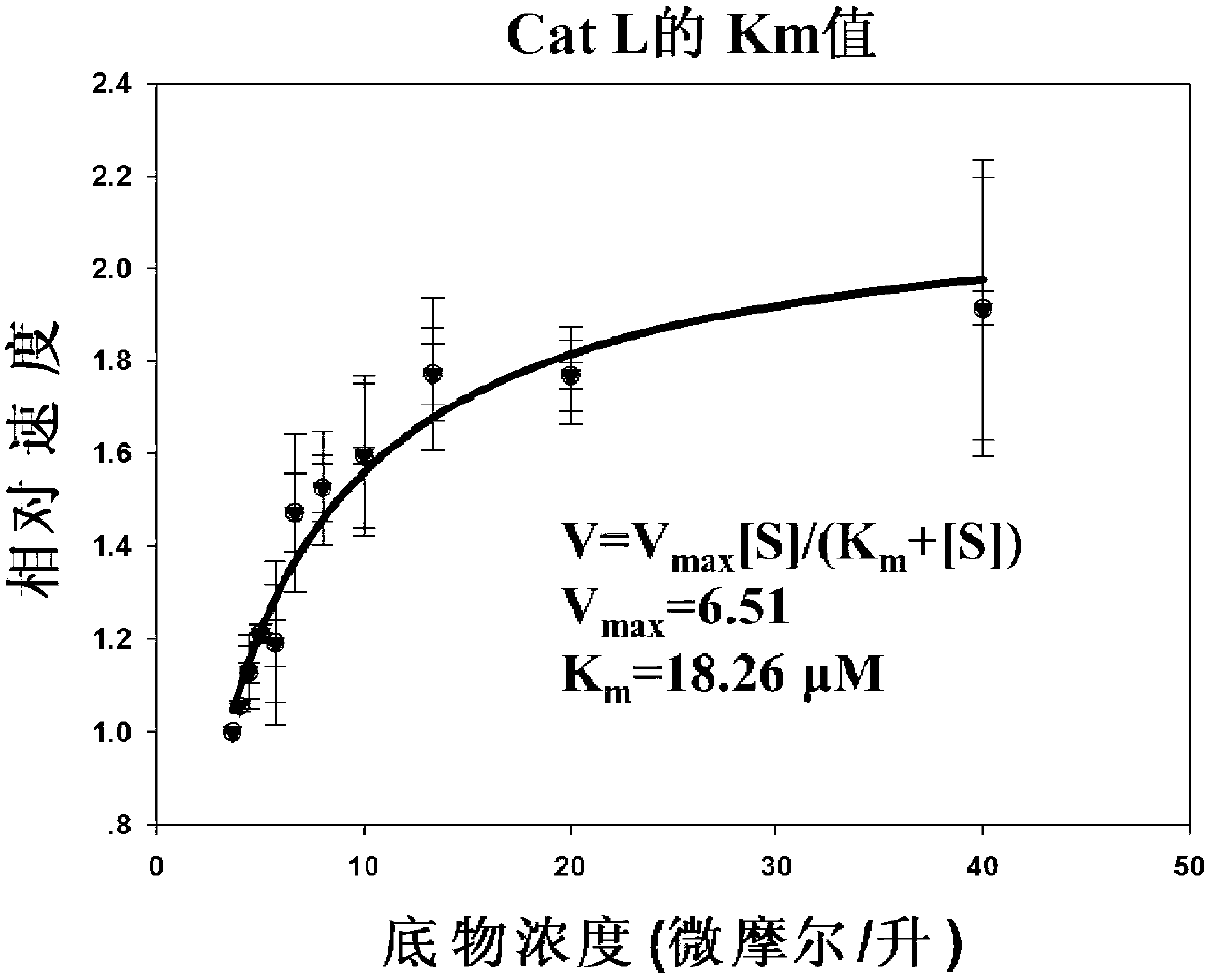Hydrazine nitrile cathepsin inhibitors with different P<3> structures, and application thereof
A technology of cathepsins and inhibitors, applied in the field of design and synthesis of cathepsins inhibitors, can solve problems such as side effects, and achieve the effects of easy synthesis, convenient synthesis and simple structure
- Summary
- Abstract
- Description
- Claims
- Application Information
AI Technical Summary
Problems solved by technology
Method used
Image
Examples
Embodiment 1
[0054] R in this example 1 is isobutyl, R 2 For 4-bromophenyl, the synthetic route is as follows:
[0055]
[0056] (1) Synthesis of Compound A: Put 2.01g of p-bromophenylacetic acid into a 100mL round-bottomed flask filled with a stirring bar, add 20mL of thionyl chloride dropwise, install a spherical condenser, and heat to reflux for 3h. Then change the reflux device to a distillation device, distill off the thionyl chloride, and recrystallize with a small amount of cyclohexane to obtain compound A.
[0057] (2) Synthesis of Compound B: Add 1 mL of thionyl chloride dropwise to 5 mL of anhydrous methanol under stirring in an ice-salt bath. After 10 min, 1 g of L-leucine was added to the system. After 30 minutes, the reaction system was moved to room temperature and stirred. After 2h, the system was heated to reflux in a water bath. After 1 h, the system was removed, and excess methanol was distilled off (so that the amount of methanol was just enough to prevent precip...
Embodiment 2
[0067] In a similar manner to Example 1, compounds 1 and 3 were synthesized with 4-methoxybenzoic acid, 4-trifluoromethylbenzoic acid and 4-nitrobenzoic acid instead of 4-bromobenzoic acid in Example 1, respectively. , 4. The characterization results are as follows:
[0068] Compound 1: 1 H NMR (500MHz, CDCl 3)δ7.77(d,J=8.7Hz,2H),6.94(dd,J=8.9,2.1Hz,2H),6.50(d,J=8.3Hz,1H),5.32(td,J=10.1,3.8 Hz,1H),3.36(s,3H),3.23(s,3H),1.87–1.78(m,1H),1.75–1.55(m,2H),1.09–1.02(dd,J=25.8,6.6Hz, 6H);
[0069] FT-IR (KBr, cm -1 ): 3297, 2960, 2870, 2222, 1694, 1626, 1540, 1503, 1264;
[0070] MS (ESI) m / z: Molecular formula: C 17 h 24 N 4 o 3 ,Theoretical value: 332.18, measured value: 332.9(M+H), 354.8(M+Na), 370.8(M+K);
[0071] Compound 3: 1 H NMR (500MHz, CDCl3) δ7.86(d, J=8.1Hz, 2H), 7.66(d, J=8.2Hz, 2H), 6.86(d, J=7.7Hz, 1H), 5.33–5.25(m ,1H),3.35(s,3H),3.25(s,3H),1.86–1.77(m,1H),1.69(dddd,J=40.1,13.7,9.9,3.8Hz,2H),1.10–0.99(m ,6H);
[0072] FT-IR (KBr, cm -1 ): 3332, 2960, ...
Embodiment 3
[0078] R in this example 1 is isobutyl, R 2 It is 4-(2-thiophene)phenyl, and the synthetic route is as follows:
[0079]
[0080] Add 0.256g (2mmol) 2-thiopheneboronic acid, 0.38g (1mmol) compound 2, 0.058g (0.05mmol) tetrakistriphenylphosphopalladium, 2mL 1M Na to a 100mL round bottom Schlenk flask 2 CO 3 solution and 30 mL THF. The mixture was freeze-thawed and vacuumed three times with nitrogen, then heated at 70°C for 2.5 h with vigorous stirring. Heating was stopped, and the solvent was spin-dried after the solution was cooled to room temperature, and 10 mL of water and 30 mL of ethyl acetate were added to the residue. After the organic phase was separated, the aqueous phase was extracted three times with ethyl acetate, and the organic phases were combined. The organic phase was washed twice with water and washed with anhydrous Na 2 SO 4 Dry and rotary evaporate to dryness to obtain the crude product of compound 7. The crude product was purified by column chrom...
PUM
 Login to View More
Login to View More Abstract
Description
Claims
Application Information
 Login to View More
Login to View More - R&D
- Intellectual Property
- Life Sciences
- Materials
- Tech Scout
- Unparalleled Data Quality
- Higher Quality Content
- 60% Fewer Hallucinations
Browse by: Latest US Patents, China's latest patents, Technical Efficacy Thesaurus, Application Domain, Technology Topic, Popular Technical Reports.
© 2025 PatSnap. All rights reserved.Legal|Privacy policy|Modern Slavery Act Transparency Statement|Sitemap|About US| Contact US: help@patsnap.com



